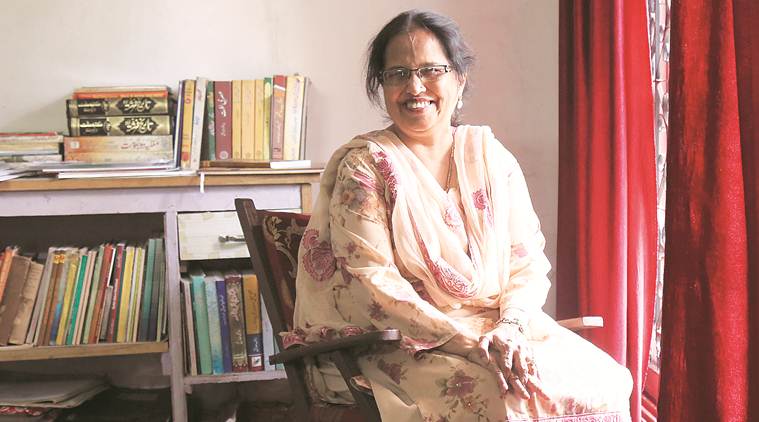
Art historian, retired director of the Department of Tourism Administration at the Dr Babasaheb Ambedkar Marathwada University and former member of Aurangabad’s heritage committee, Dulari Gupte Qureshi has penned several books and articles on the historical significance of the region’s monuments. In an interview with Kavitha Iyer, she says some of the city’s heritage is unknown to most.
Has the tourism potential of monuments of historical importance in Aurangabad been fully tapped?
Actually the problem in Aurangabad is that there is a lot of potential – sometimes when you have so much history you tend to have a “chalta hai” attitude. So while ASI and other agencies are trying to put Aurangabad on the global map by making it a World Heritage Site like Jaipur, not all agencies are very serious. For example there are several historical gates in the city, now numbering only 16 or 17. When I realised they could be preserved, I wrote a series of newspaper articles explaining their historical significance, architecture and what can be done. That ran for two to three years. We also wrote to the Maharashtra government regarding forming a heritage committee to address the neglect of some monuments. While Ajanta and Ellora are under the ASI, there are others that are not under any agency. Apart from places of historical importance, Aurangabad has a unique underground aquaduct system. The heritage committee was finally formed in the Aurangabad Municipal Corporation in 2007.
What part of Aurangabad’s architectural heritage has been lost in recent times?
A few years ago I was away in Hyderabad when I got a call from the authorities asking where I was. That night they demolished a portion that was left of the 300-year-old Khas Gate, one of the historical gates in the city. Earlier, my husband had gone and stood in front of the machines and they couldn’t do anything. Then, after the demolition of the Damdi Mahal palace in 2017, which was built by the Nizam of Hyderabad, we organised a protest candle-light march.
Inside the Aurangabad jail, the state authorities wanted to expand space by demolishing some structures. The jail is an old medieval sarai, with walls-like fortification. It was Aurangzeb who had built this sarai, where travellers could stop to rest in dormitories with a tank at the centre and a watch tower. We visited the jail. When I saw the beautiful watch tower, I was stunned that they wanted to destroy this. We opposed the proposal to demolish monuments inside the jail. This was two years ago. We asked them to shift the location of their proposed expansion. The structures are saved though no conservation is being undertaken.
You have been organising free of cost heritage walks in Aurangabad. What are some of the unknown architectural gems of the city?
We have been conducting heritage walks since 2014 to create awareness among people. The better the awareness, the more pressure groups we can prepare to protect monuments. We are taking them to places that have historical value but are unknown.
One of the walks was to Dhwani Mohalla, a suburb developed during the time of Aurangzeb and the Nizam. In a narrow lane here we discovered several monuments, the city’s first gurudwara, a Vithal Rukmini temple where Lokmanya Tilak had stayed, an akhada where there used to be wrestling, etc. There are also very old palaces – Aurangzeb’s palace is still there in the Government College complex, it is beautiful. We counted 100 rooms. Built on multiple levels, some rooms are now underground. There is a hamam down there. It is just lying there, unused and neglected. It has been denotified, so it is no longer a protected monument. The problem is also that the atmosphere is such that people think if it’s Aurangzeb’s, it can be forgotten. Then there are the palaces of Malik Ambar, the founder of Aurangabad who was originally an Abysinnian slave appointed as military commander by the Nizam Shah in Ahmednagar. There is the Qile Ark inside the Government college, also various structures inside the 300-acre Himayat Baug.
What other heritage awareness activities are you planning?
We have not completed walks to all of Aurangabad’s sites. There are important monuments in the Cantonment area, a Nizam-era bungalow and an old church. We are also planning a visit to Khultabad which in the 12th Century was a Sufi centre where hundreds of saints had been sent by Nizamuddin Auliya. It has the maximum number of tombs to Sufi saints.
You have another book coming out, what is it about?
It is a project with the ICHR. It will be an analysis of the costumes, textiles and coiffures in the Ajanta and Ellora sculptures. This is going to be different from my previous books. It has taken five years to complete, and we expect it to be published next year some time. The study also compares jewellery pieces excavated from other nearby sites, because towns like Bhokardan, Ter and Paithan were thriving in that era.